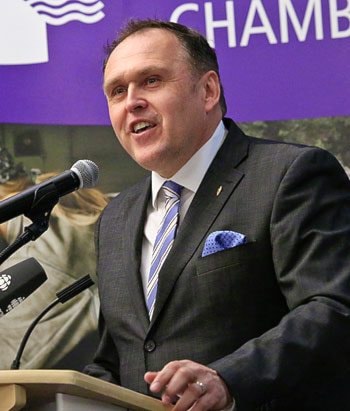Concerns over blasting were enough for the government to knock Porter Creek out of contention as the site for Whitehorse’s new continuing care facility, says Premier Darrell Pasloski.
Building in Porter Creek would have meant blowing up bedrock in the established community.
“In spite of all the other great attributes that Porter Creek had, the fact that we had to blow bedrock up, we thought that wasn’t a good choice,” he said.
Controversy over the facility blew up this week after documents obtained through an access-to-information request showed Cathy Morton-Bielz, assistant deputy minister of continuing care, warned against putting the 150 beds - which will eventually grow to 300 - in Whistle Bend.
“The optics of placing a care facility in an empty field is really a nightmare and will haunt the government for far longer than a bit of community opposition,” she wrote.
Both a geotechnical study and a business case analysis said Porter Creek was the top choice.
A piece of land next to the secondary school met the requirements set for the facility, including that it be in an established community, not one under development like Whistle Bend. Pasloski was unclear about when these priorities changed.
“When you look at everything, the decision was made to go there. What’s important is that we’re building this facility that is very desperately needed,” he said.
It doesn’t look like Whistle Bend is growing as quickly as originally anticipated, raising questions about how complete the neighbourhood will appear once elderly residents begin to be moved there when the first, 150-bed phase of the new facility is expected to open in 2018.
In the territory’s business case analysis published last year, the city is cited as saying it expected 1,000 residents to live in Whistle Bend by spring of this year. As of today, the numbers don’t look anywhere close.
No simple head count exists. But so far the city has issued 226 permits for dwellings, said Mike Gau, the city’s director of development services.
“We’ve issued them permits. I can’t say that all of them have started, but I would say almost all of them have started as this is the building season,” he said.
Planners usually estimate 2.4 people per unit, which suggests that 542 people could live there when all of those units are completed. “What I’d say is that our growth rate in the city has slowed down, as has our economic development, and that’s across the city. It does go up and down year to year,” Gau said.
Growing a community takes time, he said. “It’s very big. It’s a whole new Copper Ridge. Copper Ridge took more than 20 years to build out and that’s what we anticipate for Whistle Bend.”
The main street - Keno Way - passes right in front of the Whistle Bend continuing care site. A nearby pond and walk trails are completed.
But bigger pieces - like shops planned for along the main street - are years away. Shoppers come first and then businesses.
“I don’t see the Keno Way being populated in the next five years. But again it depends on growth rate and activity and all of those things can swing from year to year.”
The continuing care facility is going to be surrounded by a lot of things that, when built, make Whistle Bend a very good choice, Gau said. “It’s just early days now.”
In the business case analysis, Whistle Bend is considered more risky than Porter Creek.
Ground conditions are “known to require unusually costly foundation work, and it is considered ‘possible’ that they are not well enough understood at this time to avoid delays and cost increases as the project commences,” it says.
Pasloski said he can’t say what extra costs might be associated with the foundation. “That’s because we haven’t done a design yet. I think that you can’t put the cart before the horse.”
Both the premier and the NDP have come out swinging over the issue. Pasloski accused the opposition of “sowing fear” and NDP Leader Liz Hanson is calling for the whole project to be put on pause until more information is public.
“No conversation has been had with any of the public or the professionals that are involved in these. It’s internal to government. And it all may be very valid internal to government but we don’t know,” she said.
Hanson said she wants to understand why the facility needs 300 beds and what other options for care were considered.
The NDP is hosting its own public forum in September. They are also circulating a petition asking the government to consult Yukoners and reconsider Whistle Bend.
Pasloski said consultations will be happening now that a location has been finalized.
An advisory group of health care professionals is being created and they will be going out to consult with the seniors groups about what they want the facility to be, he said.
No dates have been set yet.
The premier insists concerns over building a continuing care facility in a new community existed when Copper Ridge Place was built 15 years ago. Now it fits in well with the community, he said.
Ironically, that seems to be something the premier and Morton-Bielz can agree on.
The success in Copper Ridge that the premier is trumpeting is the same thing she used to fight against Whistle Bend in the first place.
Any public backlash against the facility going to Porter Creek would be short-lived, she wrote. “There was lots of opposition to Copper Ridge Place going in - the neighbours are now delighted we are there. The same will happen if PC is chosen.”
Contact Ashley Joannou at
ashleyj@yukon-news.com
